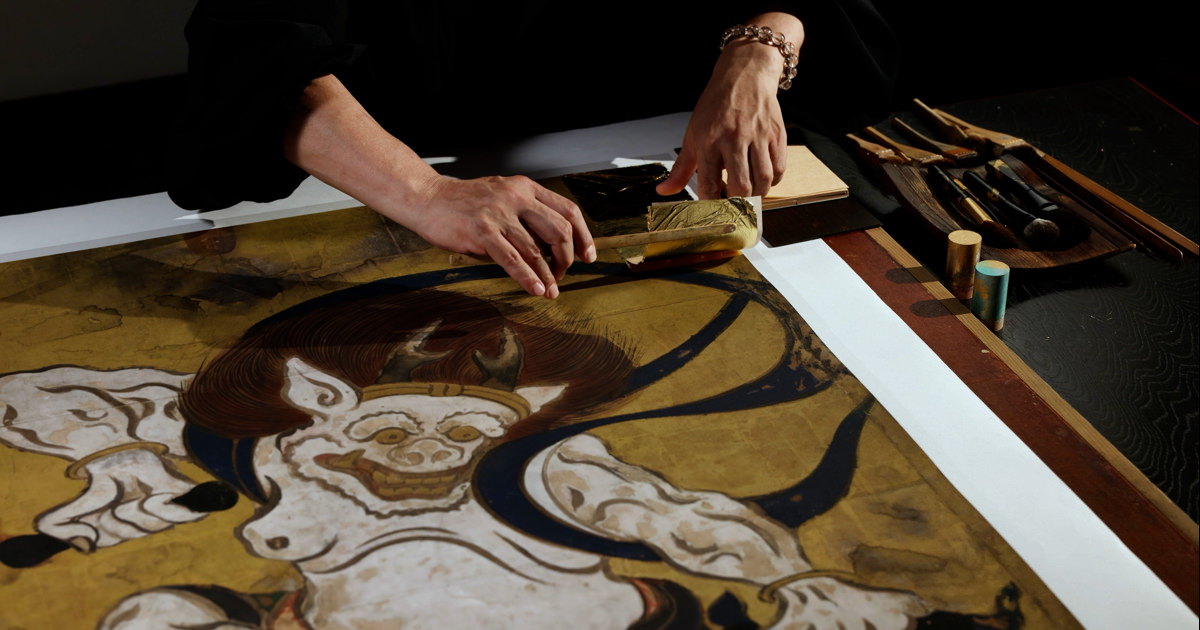These images were photographed through the Tsuzuri Project. Unauthorized copying, duplication, or transfer of these images is strictly prohibited.
Battle of the Carriages
High-resolution facsimiles
- Material
- printed, gold paint on washi paper
- Period of creation
- The Joint-research Project with CPCP 2022
- Collection
- Tokyo National Museum
Original
- Cultural property designation
- Important Cultural Property
- Artist
- Kano Sanraku
- Historical era
- Edo (17th century)
- Material
- Color on washi paper
- Medium
- four-fold screen
- Size
- Each screen H155.6 × W361.0 cm
- Collection
- Tokyo National Museum
Description
This is a four-paneled folding screen. Though the right side depicts an orderly procession of people and horses, the left side shows a chaotic collection of people and ox carriages. This is a scene from The Tale of Genji, an ancient Japanese literary classic. Genji is the impressive man riding the fine black steed on the first panel on the right. The setting is Kamo Shrine in Kyoto. People have gathered here to catch a glimpse of the radiant Prince Genji as he heads to a ceremony at the shrine. On the second panel from the left, three ox carriages block the view of Genji's procession. This is the party of Genji's wife, Aoi-no-ue. The attendants of Aoi-no-ue are violently trying to push aside the other ox carriages already gathered there. One of these is actually the carriage of Genji's lover Lady Rokujo. This struggle for the best viewing spot is actually the struggle between two rivals for Genji's affections. Despite the antiquity of the tale, the painter, Kano Sanraku, has given the characters an appearance more befitting to his own time. Perhaps he was trying to paint a scene that would feel alive and realistic to contemporary viewers.
— Cited from Colbase



